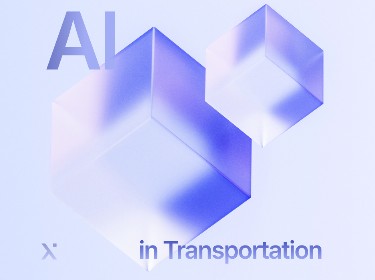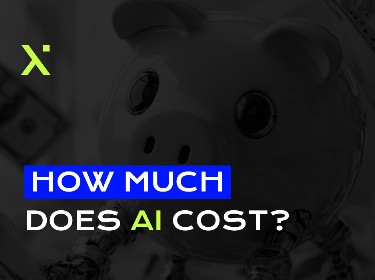Fraud attacks have grown in sophistication. The concept behind using machine learning in fraud detection presupposes using algorithms that detect patterns in financial operations and decide whether a given transaction is fraudulent.
As businesses transition to the digital realm, the threat of online fraud intensifies. In response, the fraud detection and prevention market is growing and is expected to reach $92.3 billion by 2027, with machine learning playing a pivotal role in this expansion.
Our ML and AI development company is deeply committed to bolstering global cybersecurity and have been actively engaged in this crusade, leveraging the robust capabilities of machine learning to devise sophisticated fraud detection instruments, particularly in the evolving realms of NFTs and Web3.
Our contributions in this field include CheckNFT and WatchDog projects.
CheckNFT employs ML algorithms to meticulously analyze NFT collectibles, effectively identifying and mitigating fraudulent activities.
Similarly, WatchDog represents a breakthrough in intellectual property protection within Web3. It also uses the power of machine learning to support NFT creators and brands in safeguarding their rights and themselves against any fraud in the brave, new web3 world.
As we explore further the role of ML in fraud detection, we invite you to delve deeper into these cutting-edge solutions. Our article will provide an overview of the technological advancements and demonstrate how machine learning is transforming the future of online security and fraud prevention.
What are the benefits of machine learning fraud detection?
Before we delve into the details, let’s address the benefits of adopting machine learning for fraud detection.
![]()
Faster and more accurate detection
Machine learning stands out for its ability to swiftly and accurately analyze current consumer patterns and transaction methods, surpassing human analysis in speed and precision. It excels at instantly identifying deviations from typical behavior.
Our CheckNFT project stands as a testament to the formidable capacity of machine learning to achieve high-level fraud detection.
Employing sophisticated ML algorithms, CheckNFT has proven adept at quickly and accurately detecting a range of fraudulent activities. This includes the identification of blacklisted entities, uncovering of wash trades, and recognition of duplicate items. Such advanced scrutiny offers invaluable support to NFT enthusiasts and enterprises, enabling them to make informed investment choices while effectively circumventing potential hazards.
Large datasets yield better forecasts
Machine learning’s proficiency in handling extensive datasets distinctly sets it apart from traditional methods, as vividly demonstrated by the WatchDog IP protection service in the Web3 environment.
WatchDog efficiently manages a vast logo database, applying advanced detection algorithms that showcase machine learning’s capability to process large amounts of data far beyond human analysis limits.
Sophisticated techniques such as Contrastive Language-Image Pre-Training (CLIP) are used for precise image-text matching. The service’s robustness is significantly enhanced by training the CLIP model on comprehensive, diverse datasets including YOLO, Frickl, and LogoDet-3K. Training on such varied data inputs exemplifies the inherent ability of machine learning to absorb and refine its capabilities from extensive data sources.
Moreover, the integration of the Faiss library for logo comparison tasks in WatchDog highlights machine learning’s ability to conduct rapid similarity searches and efficiently handle large-scale data clustering.
All of these functionalities are crucial for effectively processing, analyzing extensive datasets, and enabling accurate and timely logo detection and protection in the realm of IP security.
Cost-effective detection technique
Machine learning’s rapid data analysis dramatically shifts how businesses operate. This technology removes the need for time-consuming manual reviews every time new data comes in, which is particularly beneficial for companies that see seasonal changes in traffic, sales, or sign-ups.
During busy seasons or unexpected traffic surges, machine learning can effortlessly manage the extra workload while keeping its accuracy. This ability is essential for businesses to keep up with changing demands, ensure data integrity, and make quick, informed decisions.
The real-world impact of machine learning is clearly seen in our own CheckNFT and WatchDog solutions. These systems have been instrumental in saving users money by providing critical insights and trustworthy data. They help identify fake NFTs before making investments and detect IP rights violations that could lead to substantial financial repercussions.
Check out the benefits of using machine learning for eCommerce described in our article
What are the limitations of fraud detection with machine learning?
Using machine learning for fraud detection allows you to detect irregular patterns in everyday transactions. However, as with any other technology, the fraud detection ML system has limitations. Among these are positive errors, less control, and no human intelligence.
Let’s take a closer look at each.
![]()
Positive errors
Machine learning models require a large amount of data if they are to be accurate. This data volume is fine for large enterprises, but for others it is a challenge to have enough data points to identify valid cause-and-effect correlations.
Without the necessary data, fraud detection machine learning algorithms may learn incorrect inferences and create false or irrelevant fraud evaluations.
Less control
Fraud detection machine learning models are employed to evaluate actions, behavior and activities. Initially, when the dataset is small, they are blind to data connections. As a result, the model may overlook a seemingly evident connection, such as a shared card between two accounts.
No human intelligence
It’s difficult to beat good old psychology when working out why a user’s activity is questionable. Even the most advanced technology cannot replace the expertise and judgment required to correctly filter and interpret data and evaluate the meaning of the risk score.
If you want to learn more about how machine learning is utilized in fraud detection, our video guide is the perfect resource for you.
Led by knowledgeable experts, we will explore the intricacies of training machine learning algorithms as well as see which benefits organizations stand to gain from using ML in fraud detection. We will also discover how machine learning empowers businesses from different sectors to stay ahead of fraudsters and safeguard their financial systems.
How does machine learning in fraud detection work?
Despite their proven effectiveness, ML-based fraud detection systems can be challenging to implement. Therefore, let us examine a few guidelines for streamlining their implementation while overcoming potential drawbacks.
Feeding data and extracting features
To detect fraud, a machine learning model must first collect data. The model analyzes all the data gathered and then segments it before extracting the required features from it.
Feature extraction will then be the next step. At this point, features describing good and fraudulent customer behavior are added. These features usually include, but are not limited to the following:
- transaction value
- product SKU
- credit card type
Data relating to how the customers connect to the site could also be added:
- VPN, proxy, or Tor usage
- type of device
- IP data
The list of investigated features can differ depending on the complexity of the fraud detection system.
Choosing a limit
When developing a fraud detection model, it is critical to establish a threshold. This threshold would determine the acceptance/rejection rate and the minimum requirements to trigger a response. It would thus represent a tradeoff between true positives (fraudsters blocked), false positives (genuine users blocked), and false negatives (fraudsters not blocked). The right balance largely depends on the risk level a business can absorb.
At this point, it might also be helpful to distinguish between the different machine learning models and algorithms for fraud detection. These include:
- Supervised learning. In a supervised learning model all input information has to be classified as good or bad. A supervised learning model is based on predictive data analysis and is only as accurate as the training set provided. A significant drawback of the supervised model is that it cannot detect fraud that was not included in the historical data set from which it learned.
- Unsupervised learning. An unsupervised learning model detects anomalous behavior in cases of scarce or unavailable transaction data. An unsupervised learning model continuously processes and analyzes new data and updates its models based on the findings. It learns to identify patterns and decide whether they are parts of legitimate or fraudulent ones. Deep learning in fraud detection is often associated with unsupervised learning algorithms.
- Semi-supervised learning. Mostly used for cases where labeling information is either impossible or too expensive and requires human expertise. A semi-supervised algorithm for fraud detection in deep learning stores data about key group parameters even when group membership of the unlabeled data is unknown. It does so on the assumption that the discovered patterns can still be valuable.
- Reinforcement learning. Allows machines to automatically detect ideal behavior within a specified context. It constantly learns from the environment to find actions that minimize risks and maximize rewards. A reinforcement feedback signal is required for the model to learn its behavior.
Testing on historical data
The next step involves creating a confusion matrix based on previous transactions over the selected time frame.
In machine learning, a confusion matrix, or error matrix, is a table layout that allows visualization of the performance of an algorithm. This allows, for example, for calculation accuracy over a specific date range.
This gives fraud managers complete control over their risk strategy, allowing them to decrease, monitor and test the results.
3 use cases of fraud detection with machine learning
![]()
Let’s take a look at how fraud detection and machine learning are being used in real-life scenarios.
Rental sites
Like all online businesses, rental platforms are prone to attacks aimed at stealing credit cards — which is why applying machine learning for fraud detection is common practice. A good real-life example is Airbnb, which uses ML models that have been trained on past examples of confirmed good and confirmed fraudulent behavior.
In some situations, Airbnb blocks actions outright, but in most cases they allow the user to satisfy an additional verification called a friction. A friction is anything that blocks a fraudster yet is easy for a ‘good’ user to get through.
The company trains the chargeback model using positive (fraud) and negative (non-fraud) examples from previous bookings to forecast the likelihood that a booking is fraudulent.
Video games
Video games present unique challenges when it comes to detecting fraud. An example is account sharing, which is common in games, leading to erratic and unpredictable spending that looks like fraud.
However, models that are trained using machine learning algorithms help solve this problem. For example, Amazon’s Fraud Detection Using Machine Learning solution helps developers run ML models that detect in-game fraud.
This solution enables automated transaction processing. The machine learning model detects potentially fraudulent activity and highlights it for further investigation. The solution also provides a dataset of credit card transactions contained in an Amazon S3 bucket, but it can be modified to include datasets for other sorts of fraudulent conduct too.
Anti-money laundering programs
Recent advances in machine learning are helping banks to significantly improve their anti-money laundering (AML) programs, particularly the transaction monitoring component of these programs.
According to McKinsey, many financial institutions use rule- and scenario-based tools or basic statistical approaches for transaction monitoring. Industry red flags, basic statistical indicators and expert judgment are the chief influences on these rules and thresholds. However, the rules frequently fail to capture the latest trends in money-laundering conduct.
For its part, though, fraud detection machine learning creates sophisticated algorithms using more detailed, behavior-indicative data. These algorithms are also more adaptable and constantly improving over time.
In theory, banks can apply ML across the entire AML value chain, but combining ML with other advanced algorithms is where banks can reap one of the most immediate and significant benefits in their AML efforts.
Does your business need to create its own machine learning model for fraud detection?
The greater our society’s digitalization, the greater the impact and frequency of cybersecurity attacks, with fraudsters steadily expanding the complexity of their criminal operations.
Machine learning is currently the most promising, and revolutionary, technique for helping businesses prevent the fraudulent operations that cause them ever-increasing losses each year.
When it comes to the future of your business, it’s always best to use your own customer data, as it will prove the most accurate for detecting fraud among your future customers. In addition, it prevents the model from being influenced by patterns in unrelated industries, resulting in more precise forecasts and enhanced performance.
Closing thoughts
Machine learning models are extremely effective in tackling fraud, potentially saving businesses millions.
Turn to our ML consulting services to take this a step further by creating highly tailored machine learning algorithms. Our focus is on precision and redefining data interpretation to build robust, fraud-averse solutions.
You can confidently delegate your machine learning challenges to us. We specialize in crafting workflows that efficiently manage risks, remove human error, and are guided by data-driven strategies. Our commitment to staying updated with the latest in the industry means we leave nothing to chance.
Feel free to get in touch with us for a proactive approach to fraud prevention and explore how we can support your goals.




